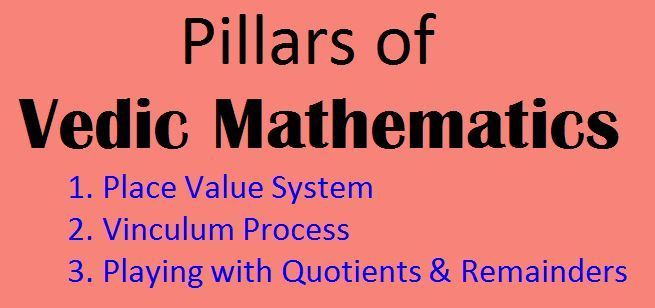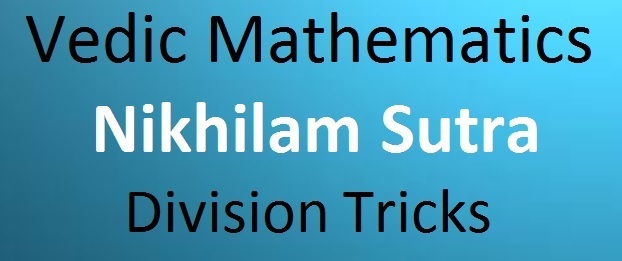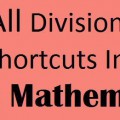While studying Vedic Mathematics, I came across some of the important concepts which forms base for most of those techniques.
So before actually going through Vedic Mathematics techniques we need understand the basics used. I have collected all these concepts and named them as Basic Requisites for understanding and learning Vedic Mathematics.
Basics of Vedic Mathematics:
- Place Value System
- Vinculum Numbers (English Meaning: Complement of a Number).
- Work with Quotients & Remainders.
Watch below mathlearners video on Vinculum





Hi,
how to convert every digit <5 in the following :
46746712
Dear sir,
Can u mail details of division , i cant understand anything
so can u send me step by step details of division.
I have addition, subtraction, multiplication , all these are clear;
but division section is not clear
So please i request u, send me step by step details ?
Thank you,
Mrs. Jyoti Pawar.
Hello Jyoti,
Please check Nikhilam and Paravartya Sutra in same sequence, also check out the videos on respective pages.
If still any doubts, post in the Topic’s Page and I will help you…
Hi,
While converting vinculum no. to normal no. following R=>L approach what if the digit after bar digit is a ‘0’
eg: 1 0 (-6) 6 4 (-6) 0 (-2) 4 ; plz provide solution for this problem.
Hello Mamta,
You can follow same instructions, only it would be more than 1 step to get the answer
After taking 10’s complement, next non-bar digit needs to be subtracted by 1, hence it will become (-1) and the process to be continued.
In case of your example
# 1 0 (-6) 6 4 (-6) 0 (-2) 4
= 1 0 (-6) 6 4 (-6) (-1) 8 4
= 1 0 (-6) 6 3 3 9 8 4
= 1 (-1) 4 6 3 3 9 8 4
= 0 9 4 6 3 3 9 8 4
Final Answer: 94633984
Let me know if this clears you.
I’m 17. I’m a university student, studying Computer science.I heard, of vedi mathematics today when I asked a 9th grade Indian friend of mine, to calculate the remainder of a polynomial equation. He calculated it in seconds, mentally. It took me a couple of minutes, to mentally verify that it’s correct. I want to be able to turn my brain into a scientific calculator, is that possible with Vedi Mathematics?
If so, direct me to where I can learn it in detail.
Yes Lancelot, Vedic Mathematics definitely helps for solving problems in faster ways but it requires lot of practice and understanding.
You can refer original book of Vedic Mathematics by Tirthji Maharaj or you go through the topics on mathlearners.com in the same sequence as mentioned. Let me know if you come across any doubts.
I’m 17. I’m a university student, studying Computer science.I heard, of vedi mathematics today when I asked a 9th grade Indian friend of mine, to calculate the remainder of a polynomial equation. He calculated it in seconds, mentally. It took me a couple of minutes, to mentally verify that it’s correct. I want to be able to turn my brain into a scientific calculator, is that possible with Vedi Mathematics?
If so, direct me to where I can learn it in detail.
Can any body give the name of sutra on which playing with quotients and remainders are performed
Hello Sasiraj,
No sutra is named for Playing with Quotients with Remainders neither it was originally named as it. I categorized it as ‘Playing with Quotients with Remainders’ as the concept is widely used in Vedic Math.
I am still doubtfull about the video of “playing with Remainders and Quotients” …
in example of D=13,Q=14 and R=11, final ans was 12|37 whereas if we count on the method that u applied in 18/4 example the ans of that example(in D=13,Q=14 and R=11 ) would be
((14 x 2)+11)=39….so final ans is 12|39 accordingly…so will you pls clarify on this matter? …..Thanks
Nopes Sawan, I have applied the formula
Dividend = Quotient x Divisor + Remainder
In case of D=13,Q=14 and R=11:
When I say 1 quotient goes to Remainder side then
RHS (Remainder) = 1 x 13 + 11 = 24
So now D = 13, Q = 13 and R = 24
Again when 1 quotient goes to Remainder side then
RHS (Remainder) = 1 x 13 + 24 = 37
SO Now Q = 12 and R = 37.
Hope this clears now.
pls solve this division by paravartya method
7236 / 123
Hello Dhwani,
Let me know the step you are stucked in.
in subraction .when doing: 11111-9876 we get : 18765 with bar on 8765 …. as per rule then bar above 8 .so we should subract 1-1 on the next digit …is that correct what i understood.
I am not sure what you meant by ‘o we should subract 1-1 on the next digit’ but you can watch this video to understand the concept of converting Vinculum Number to Normal Number. We follow R -> L approach.https://www.youtube.com/watch?v=f88ya7GeoeI.
Let me know if you still have queries.
sir, please give the name of vedic suta on which playing with quotients and remainders was performed
yes preethi what u have understood is absolutely correct…
Check the following lines from “Quotient and Remainders”, Probably you mistyped in the following lines.
If we obtained Remainder(R) which is >= Divisor(D), we divide R(not D) by D(not R) and corresponding obtained quotient is added with obtained Q and new remainder becomes R.
Thanks Rajeev !!! I corrected it … I really appreciate it for bringing to my notice.